
- Near the town of Marereni, smack in the middle of Kenya’s Indian Ocean coastline, a group of local volunteers has been protecting sea turtles and planting mangroves for nearly two decades.
- In the past two years, however, the Marereni Biodiversity Conservancy has documented alarming spikes in sea turtle deaths and in turtles with fibropapilloma tumors, as well as a decline in sea turtle nests.
- While the causes have yet to be determined, conservancy members suspect the sea turtles’ problems may be associated with pollution from nearby salt mines.
- Mongabay interviewed the group’s CEO, Daniel Masha Katana, about how it is responding to the current threats to sea turtles.
MARERENI, Kenya — One day in April, at a few minutes past six in the morning, the sun’s golden rays lit up the sea on Kenya’s coast. A few early-rising fishermen stood shoulder-deep in the sea, working their nets in pairs. On the beach, a few meters from the entrance to Giriama village, Daniel Katana and two others stood over a patch of sand. They had dug in a foot deep to reveal a nest of 122 sea turtle eggs. Smooth and soft-shelled, they resembled golf balls in size and shape. Katana held one egg and stared at it searchingly. “They will hatch in a few weeks,” he said with certainty.
In years past, Katana would have had dozens of such nests to protect over this short stretch of coast. But this year, this season, he has only two. The fishermen who looked so busy that morning are one of the main threats to the turtles and their eggs, through poaching, Katana said. Others are pollution from local salt mines and, more recently, a mysterious and sometimes fatal tumor disease called fibropapillomatosis.
Katana, a fisherman himself, serves as the volunteer CEO of the local community group Marereni Biodiversity Conservancy (MABICO). Earlier that morning, he had accompanied the group’s turtle rescue patrol on its morning shift. The drastic decline in the number of nests this year, as well as a recent spate of mysterious deaths, weighed on him.
The main objective of the Marereni Biodiversity Conservancy and its 63 volunteer members is to protect turtles around the small town of Marereni, which lies smack in the middle of Kenya’s Indian Ocean coastline. The conservancy has an office in the town, which has grown due to the presence of mining companies in the area. Hundreds of people work in the mines harvesting and heaping salt. Most local people, including Katana, are Giriama, one of the nine tribes of the Mijikenda, an Indigenous group living along Kenya’s coast. The Giriama practice artisanal fishing and agriculture, and like the other Mijikenda tribes hold dearly to their forests, or kayas. These they use for cultural practices including prayers, oath-taking, burial rites and charms, naming of newborns, initiations, reconciliations, marriages and coronations.
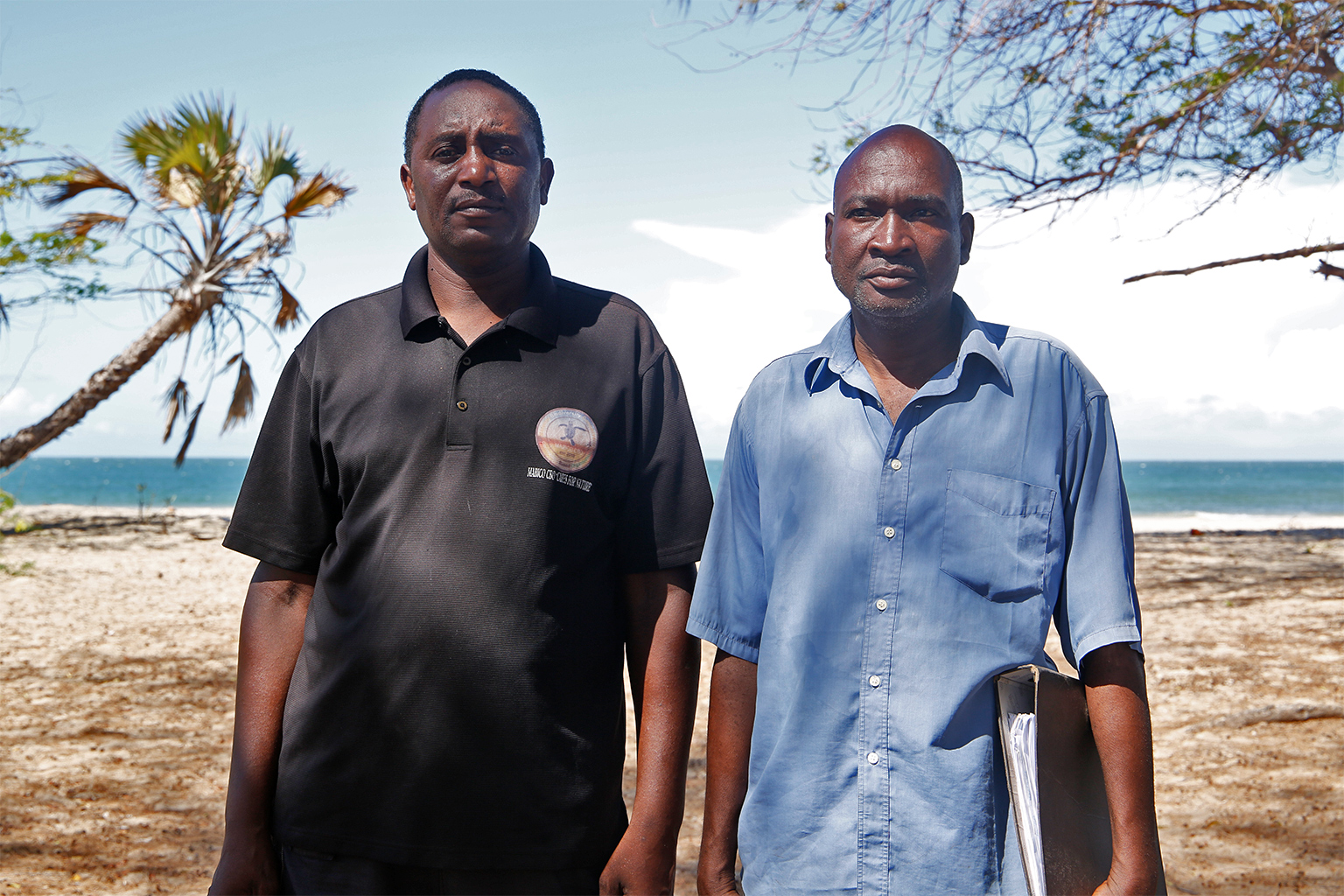
Katana and some fellow villagers began conducting turtle rescues in 2004, then officially registered Marareni Biodiversity Conservancy as a self-help group in 2010. Their area of operation stretches 17 kilometers (10.5 miles) along the coast. The organization focuses on planting as much mangrove as possible. The patrollers protect turtle nests from poachers, rescue sick turtles and transfer them to another organization for treatment, count nesting turtles, and in case of any turtle carcasses being found, record and investigate the cause of death. Katana’s organization also cleans the beach, targeting mainly plastics, which Katana said are a “death sentence” for turtles that ingest them.
Back when Katana helped found the organization, he and his colleagues’ main worry was poaching. The local population regards green sea turtles (Chelonia mydas) as a delicacy, and people eat the eggs, too. However, over time, green turtles with fibropapilloma tumors started turning up on the shores and they have continued to increase. Last year alone, Katana’s group rescued 37 green turtles with tumors on various parts of their bodies, including the eyes and shells. Now the disease, and untimely sea turtle deaths due to unknown causes, have become their primary concern.
The U.S. National Oceanic and Atmospheric Administration traces the first case of fibropapillomatosis in sea turtles to the 1800s, but the disease gained international attention in the 1980s. The tumors can occur anywhere on the body, internally and externally, on all seven species of sea turtle, and can cause difficulty feeding and swimming, and ultimately death. Studies state the primary cause is unknown but that evidence suggests a herpesvirus, chelonid alphaherpesvirus 5, together with environmental and human-driven pressures, could be a culprit. In Kenya, Pwani University is studying fibropapillomatosis in sea turtles.
Katana’s group has also seen an increase in dead turtles washed ashore, recording a serious spike to 207 deaths in 2021. These they collected mostly at the sites where the three local salt-mining companies have discharged wastewater to the sea, Katana said, but the cause of death remains a mystery.


Mongabay spoke with Katana on the beach near Giriama village, where he lives, after tagging along with the early morning patrol. The interview and follow up via telephone have been edited for length and clarity.
Mongabay: What is it about sea turtles that has drawn you to spend the last 18 years of your life protecting them? What motivates you to do this work?
Daniel Katana: It is just in our blood. We have a desire to protect the turtles. You know, we were first trained by various organizations and through the training we realized that if we didn’t take up the responsibility of protecting them, then they would disappear.
Mongabay: Who are your members?
Daniel Katana: We have the board of trustees, which has seven people who founded the organization. We then have the management committee, which has nine people, and ordinary members who are 63 in number. Apart from these, there are school-going children who … are not registered as members, but they take part in the organization’s activities. Among the members are those who are employed but the majority of the members do not have full-time employment.
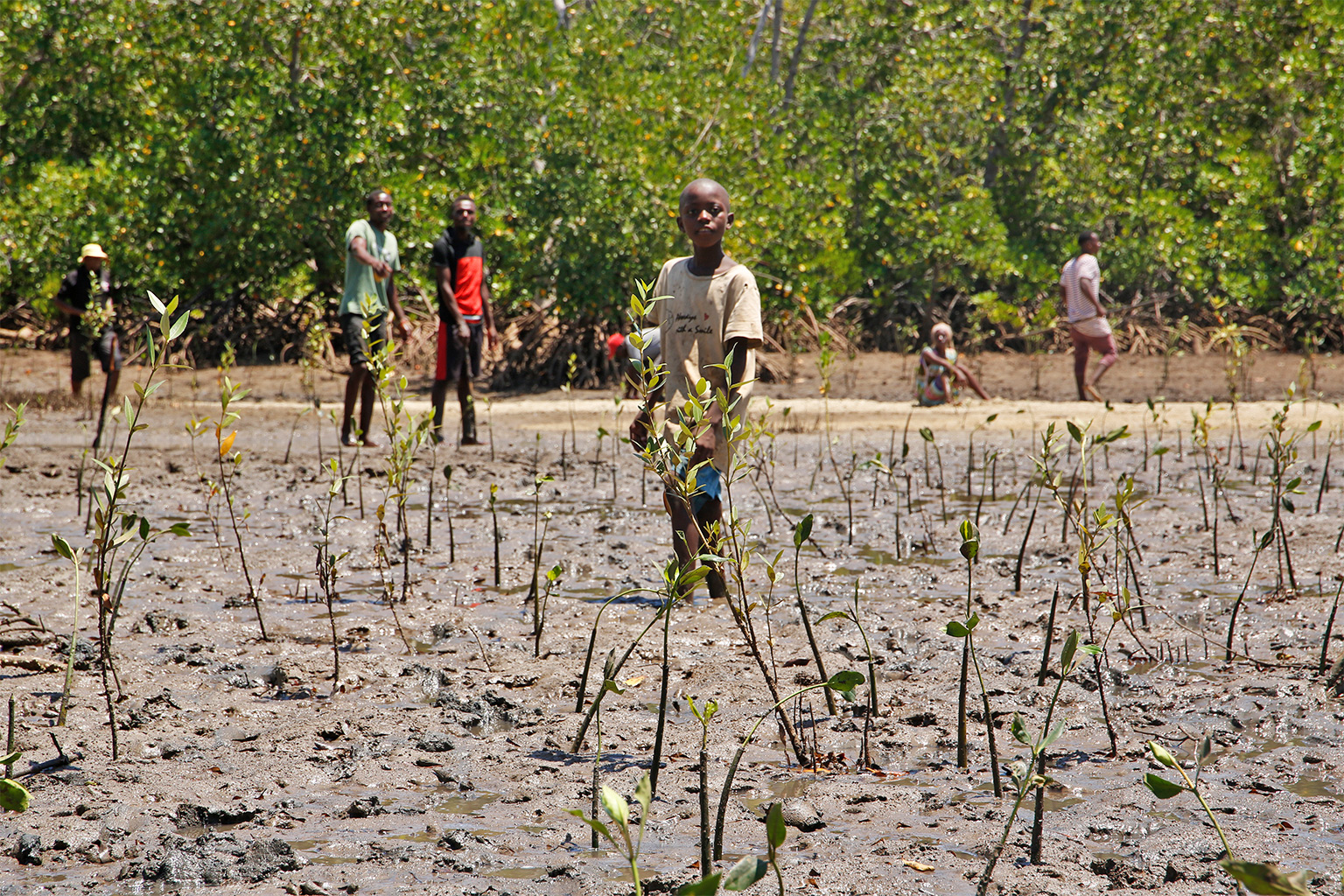
Mongabay: What do you do to ensure the turtle is protected?
Daniel Katana: We plant mangroves and undertake beach cleanups in addition to patrolling the beach. The goal is to protect turtles … Three [species] nest in Kenya and these are the olive ridley [Lepidochelys olivacea], the hawksbill [Eretmochelys imbricata] and the green turtle. These turtles, except the green turtle which is herbivorous, feed on jellyfish … When a turtle comes across plastic in the sea, it mistakes it for jellyfish. So, the plastics we take with us to the beach will find their way to the sea and it becomes dangerous to the turtles; and they are non-biodegradable. Once the turtle eats the plastic, it is like a death sentence for it. We therefore do cleanups to ensure that no plastics get to the sea and harm turtles and other marine life. Apart from harming turtles, the plastics also kill corals and by extension destroy breeding grounds for fish and other marine life.
We should also bear in mind that turtles get out of the sea and set up a nest in the beach. It is the heat from the beach sand that will determine the gender of the hatchlings. [Editor’s note: When the sand temperature is cooler than 27.7°C (81.9°F) males hatch; when it’s warmer than 31°C (87.8°F) females hatch.] Therefore, we need to plant more trees in order to get carbon out of the atmosphere. Otherwise, we may get to a situation where all the hatched turtles are of one gender … That would mean that there is no more reproduction, hence extinction of the species.
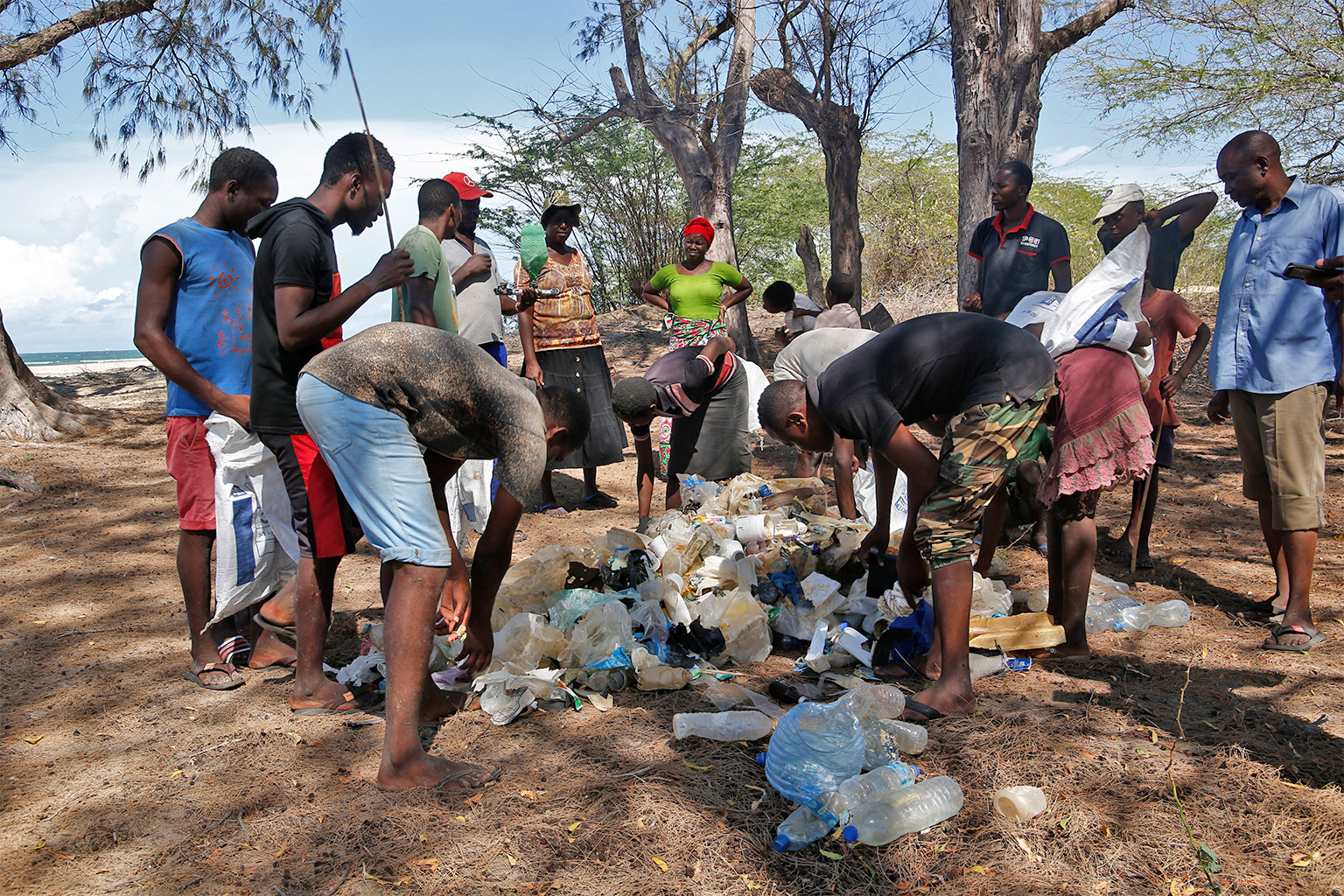
Mongabay: Is that one of the reasons why you plant trees then?
Daniel Katana: Yes, and we plant them a lot. We plant a lot of mangroves … Since the year 2004 … we have planted 3.6 million mangrove trees.
Mongabay: 3.6 million trees?
Daniel Katana: Yes, 3.6 million … And as we speak, we have tree nurseries which have over 30,000 seedlings. Locally, we have six species of mangroves. But the ones we have planted are three species. They include Ceriops tagal, which is called mkandaa in our language [Giriama], and we have the Rhizophora mucronata and the Avicennia marina, which we have put in our nursery now. Also, the Xylocarpus granatum, Bruguiera gymnorhiza and Sonneratia alba are found [in the area].
Mongabay: When do you plant the mangroves?
Daniel Katana: We have a work plan which guides us. Every two weeks we have to put up a nursery and every two months we plant mangroves. In the nursery, the seeds take between 19 and 39 days to become seedlings, so if we put set up a nursery today, within two months we have seedlings to plant. That is what we do in most cases. However, there are special cases where we have to wait for the rains, especially in places where the [salt-mining] companies have spilt wastewater and the area has become exposed to the sun for long, making it unfavorable for tree planting.

Mongabay: What is the success rate of the trees you have planted?
Daniel Katana: The rate of loss of the seedlings that we planted is less than 15% and we have planted 3.6 million so far, so you can do the calculations. However, of this number, we planted [many] in conjunction with schools and other organizations. For instance, there was a time when we had the Marereni primary and secondary schools and the Kenya Wildlife Service during World Wildlife Day [March 3]. That day we planted over 20,000 trees.
Mongabay: Since you started this work in 2004 what changes have you seen? What challenges have you encountered?
Daniel Katana: There have been changes but not as we expected. The people who used to hunt the turtle for meat have reduced as they are now afraid to. They still do it but not as openly as they used to in the past. Others have refrained.
Between the year 2012 and 2020, we protected over 700 turtle nests, and the highest number of hatchlings in one nest was 144 and the least was 69. So, on average we have protected roughly 80,000 hatchlings up to now. From the year 2020 till now, the turtle nests have really decreased. Last year, we had only 17 nests. The other year [2020] we had only 35.
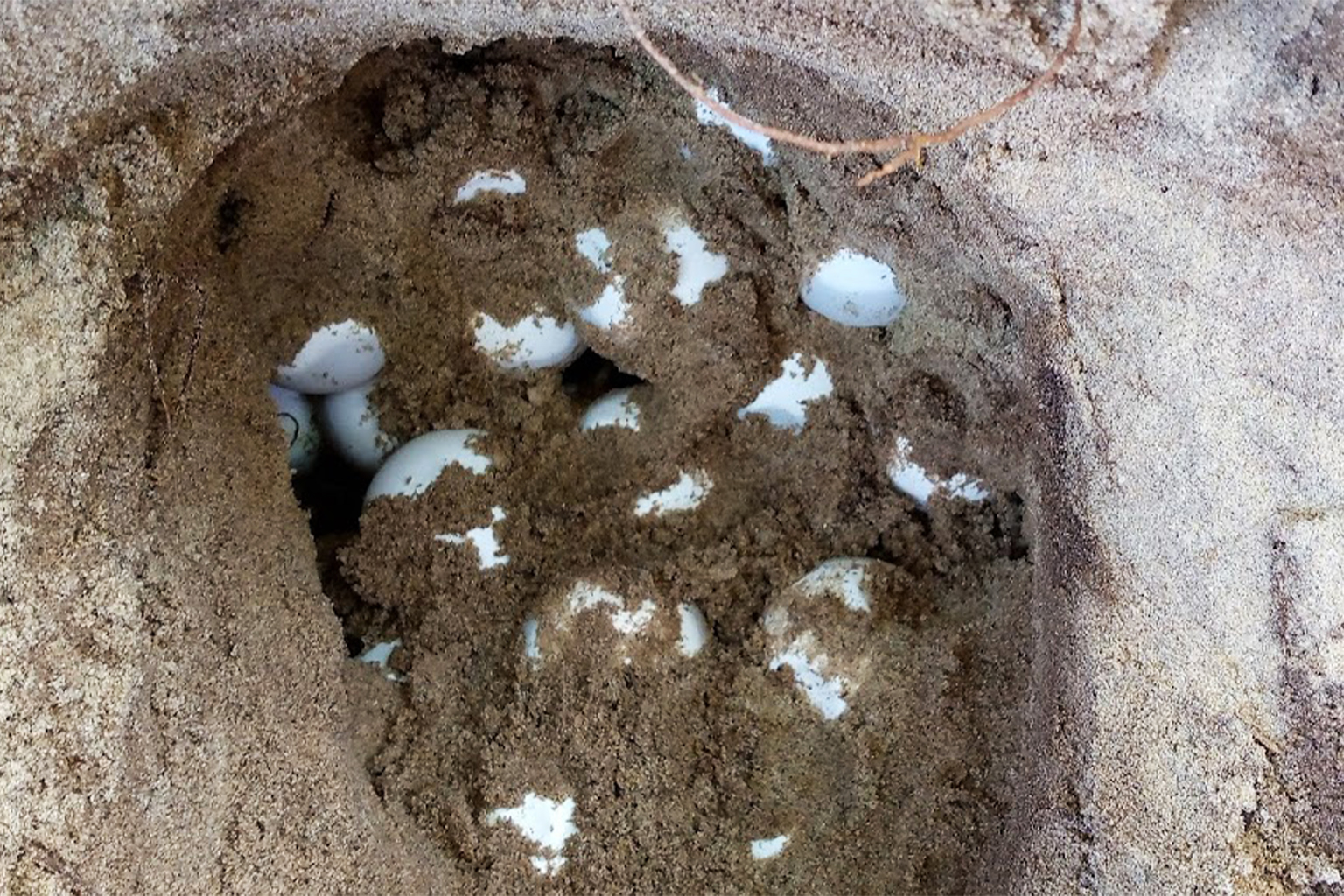
Mongabay: How does your organization patrol?
Daniel Katana: Our patrol team has 16 people. We have the commander, his deputy and 14 members who patrol on a shift basis. In the morning, four people do the patrol. [They] are looking for turtles which have come out to construct nests and lay eggs, [or] those that have been washed ashore and are either injured or dead.
Mongabay: What do you do when you come across people hunting turtles?
Daniel Katana: There was an instance when the guys on patrol came across a man sitting on a live turtle. He was waiting for [someone to bring] a knife to kill the turtle for meat. It was around six in the morning. They called me and upon arriving at the place we had to plead with him to release the turtle, which he eventually did. In some instances, we have found turtles already killed.
Mongabay: You said earlier there has been a decline in the number of turtles coming out to nest. Do you think this is because their numbers have decreased? If so, why?
Daniel Katana: I may not be able to give a direct cause of their decline but last year there are things that happened which shocked us and I think shocked the whole country. This is because just last year we recorded a total of 207 turtle deaths here in Marereni.
Out of this number, approximately 60% of them had no visible cause of death. The others had some visible traumas like a severed head, a cut on the wing or a cracked shell. However, the majority had no visible physical injury and most of them were juvenile; just about 30 of them were fully grown … who we would expect to come out and lay eggs … Most of the dead turtles were found in those areas where the [salt-mining] companies channel their wastewater. [Editor’s note: By comparison, the conservancy counted just 14 dead turtles in 2018, 26 in 2019 and 7 in 2020.]

Mongabay: Among these turtles that you have encountered, is there a particular one that has stuck in your mind?
Daniel Katana: Among the dead turtles that we found washed ashore there was one big, mature turtle. Had you seen it, you would have cried. I know it was mature because I measured and it was 140 centimeters [4.6 feet, the shell length] and 300 kilos [661 pounds] in weight. That particular one seemed to have died a week before, and when we opened the carcass she had eggs, showing that she would have made a nest soon.
Mongabay: In instances like these do you call the Kenya Wildlife Service?
Daniel Katana: Yes … we report to the Kenya Wildlife Service and the Kenya Marine and Fisheries Research Institute [KEMFRI] … When we first encountered the dead turtles with no visible injury, we thought maybe it is because they drowned inside a trawler [net], because they drag the [nets] for two to three hours yet the turtle needs to come out to the surface to breathe. We thought that may have killed them. We told the fisheries officers about it and what we thought. Unfortunately, this was during COVID and they were understaffed.
We are happy that they responded despite the COVID restrictions. On 25th February, 2021, we had a meeting here with stakeholders including the Kenya Wildlife Service, the Kenya Marine and Fisheries Research Institute, Kilifi County Government Department of Fisheries, the local beach management unit [a community group of fishers and fishmongers] and the coast guard. By the time we were having that meeting we had 59 cases of turtle deaths … There were times we would get three, and we once got six dead turtles in a single morning. The meeting resolved that the Kenya Marine and Fisheries Research Institute conducts an investigation into what was causing the turtle deaths. So, they took several samples but we haven’t heard of any results.
Mongabay: How many turtles have you rescued that had fibropapilloma tumors?
Daniel Katana: Last year we rescued 37. That was too much because in the past we would get one in three months or even in six months. In a whole year we would get about seven.

Mongabay: So, deaths and diseases in turtles have risen in the past two years?
Daniel Katana: Yes, we have seen an increase in deaths and diseases and a decrease in nests. Of those that died [in 2021], two had tumors.
Mongabay: Has the increase of salt mines near the sea affected your turtle conservation work?
Daniel Katana: It has affected us to some extent. When we receive a call from our patrol team, we need to respond fast because it may be that a poacher has been spotted with a turtle. There have been incidences in the past when security officers of the salt mines have blocked our officials from getting to the beach to respond to a turtle rescue call.
Mongabay: Is this on a public road?
Daniel Katana: It is a road between two salt-mining companies but they are supposed to give access to the community to the beach. They intend for us to use a longer route to the ocean which is impractical, especially for us when responding to a turtle rescue call.
The second thing is that they used to discharge brine to the ocean ruthlessly without thinking about the damage that it can do … The vegetation and fish that this water gets in contact with dies. Because of this water, there are places that have become like a desert and nothing can grow there. [Editor’s note: It’s unclear whether all three local salt mines continue to discharge brine into the sea.]
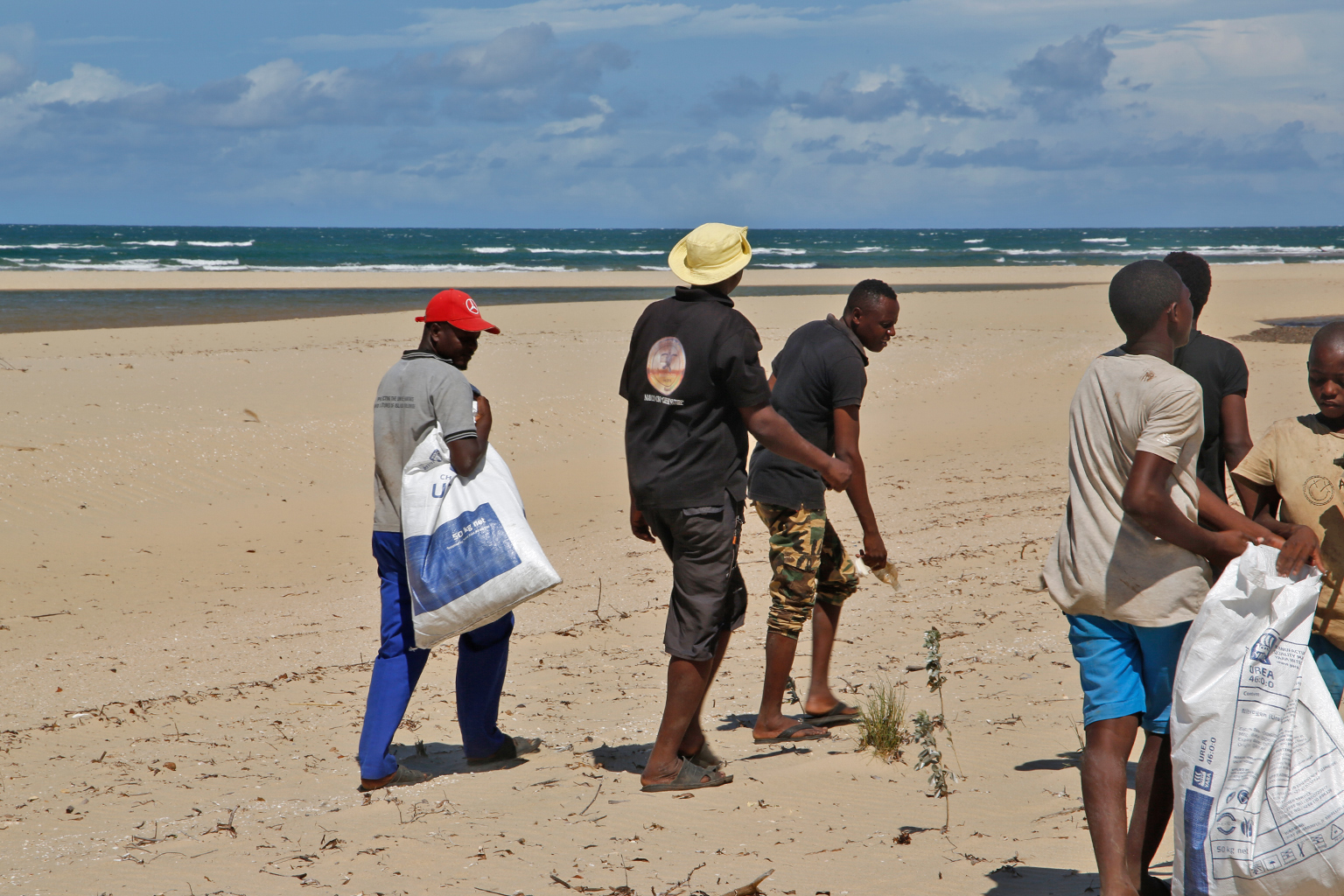
Mongabay: What challenges do you face as an organization?
Daniel Katana: The first challenge is our community itself. They know that this organization conserves turtles so whenever some people see us patrolling, they run away or just treat you suspiciously. Yet all we want to do is conserve our wildlife and environment. So, getting good information is sometimes difficult even though it is not everyone who acts like this.
Another challenge that we face is transport. If we could get at least a single motorbike, even if it is a secondhand one, it would really help our patrol team. There are some of the members of our patrol team who live by the ocean but others live further away. When it is time to go patrolling, they have to walk all the way from their homes to the beach, which is far for some. The whole of last year we were spending 300 Kenya shillings [around $2.60] on transport every day. And we got this money from member contributions. We used the money to pay for a motorbike to drop the patrol members by the beach and then after their shifts they would just walk home.

Mongabay: Do you have a background in conservation? And since you say that this is purely volunteer work, what do you do for a living?
Daniel Katana: I have received many trainings on turtle conservation from institutions like Kenya Wildlife Service, World Wildlife Fund, Cordio [a Kenyan NGO], Kenya Marine and Fisheries Research Institute among others.
I am a fisherman so when I am not here, I go to the sea to fish. Whatever I get, my wife, who is a fishmonger, sells. And that is what earns us our livelihood.
Mongabay: In the midst of all these deaths, has there been an experience that left you hopeful?
Daniel Katana: There was this time when we were on patrol along the beach. It was at dawn and still dark. We came across three men and a woman slaughtering a turtle. We stood there and they greeted us and continued with the slaughter. As it was still dark, they didn’t recognize me. Together with my colleague, we continued recording and taking photos and they continued, oblivious of our identities. At the tail end of the slaughter, it was quickly getting brighter and they recognized us and they started asking for forgiveness. I told them to continue as they had already killed the turtle and we couldn’t bring it back to life. We left them and continued with the patrol. Upon getting home, they called me saying that they wouldn’t do it and that I should forgive them. They didn’t even eat the meat and called me to witness the disposal of the carcass and they have since become advocates against poaching of turtles.
Banner image: Marereni Biodiversity Conservancy members during a beach cleanup on the shores of the Indian Ocean in Marereni, Kenya. Image by Anthony Langat for Mongabay.
200 mysterious sea turtle deaths: Q&A with Kenyan fisherman and turtle rescuer Daniel Katana
Source: Trends News

0 Comments